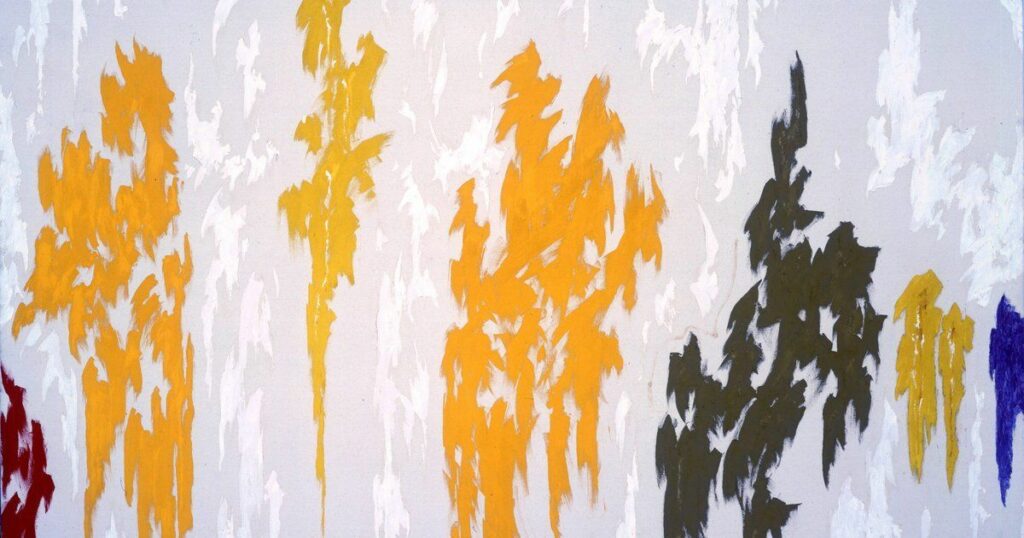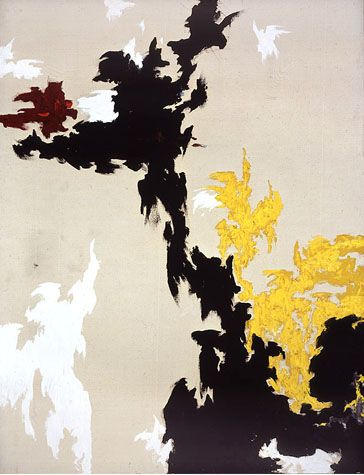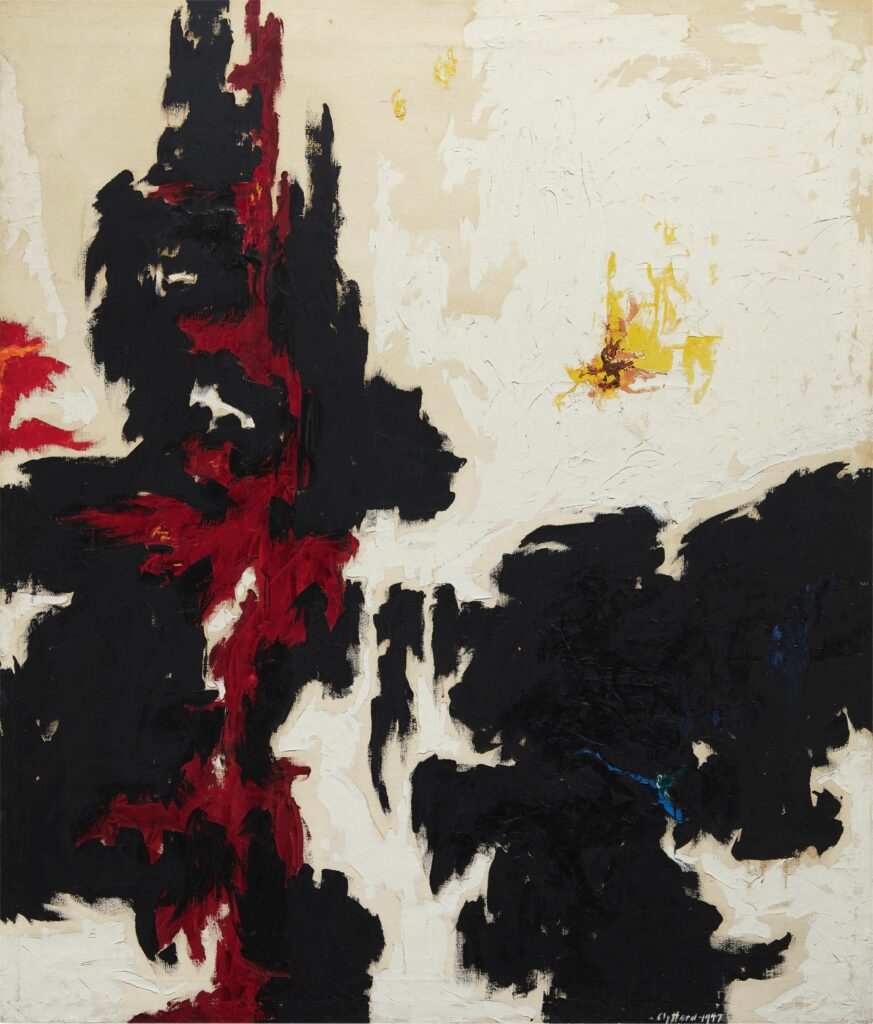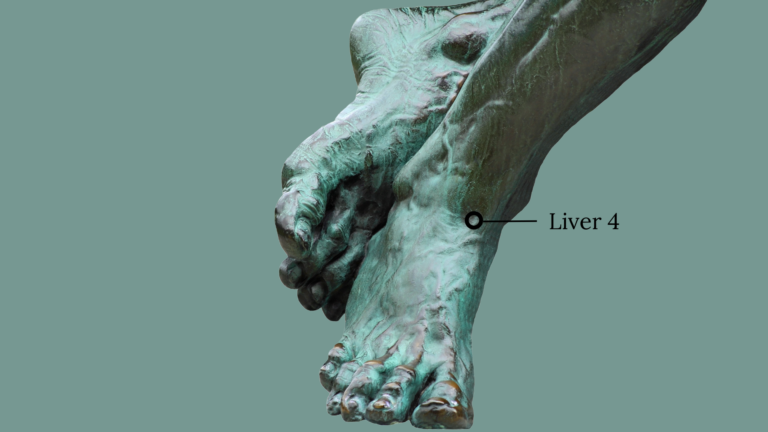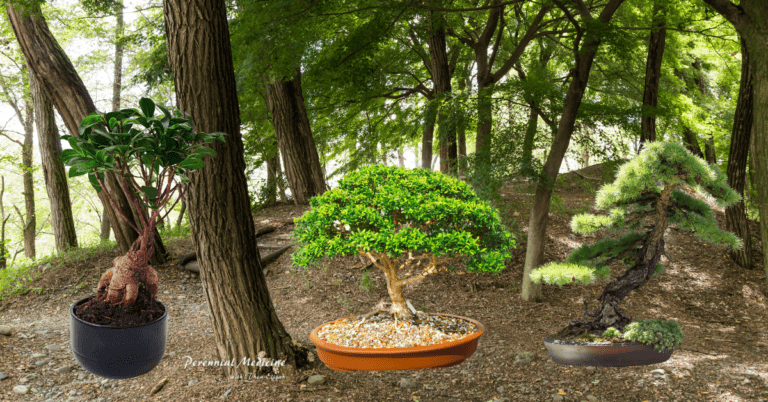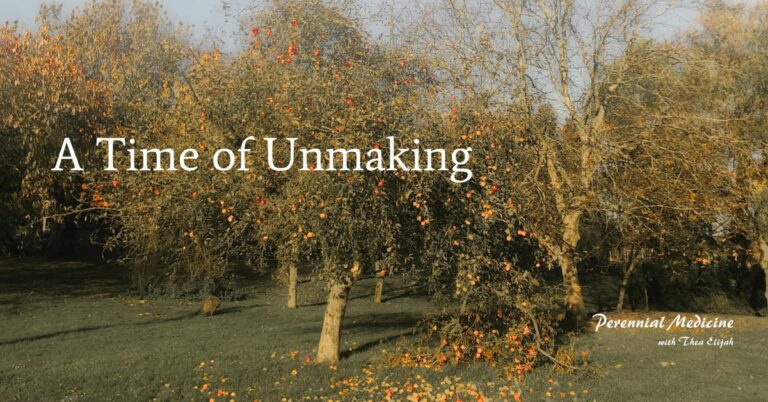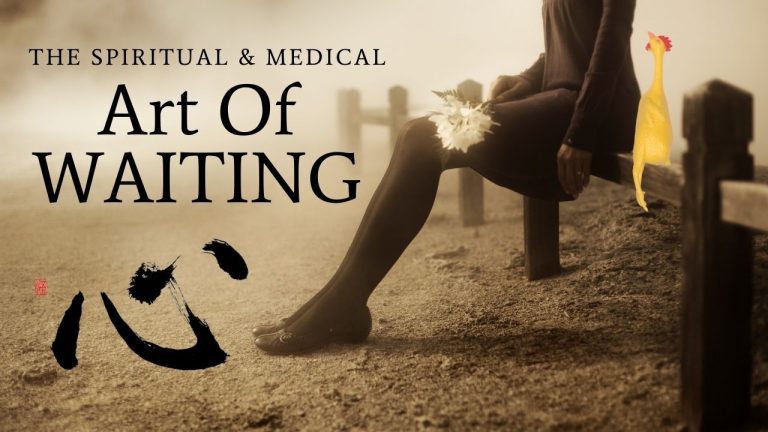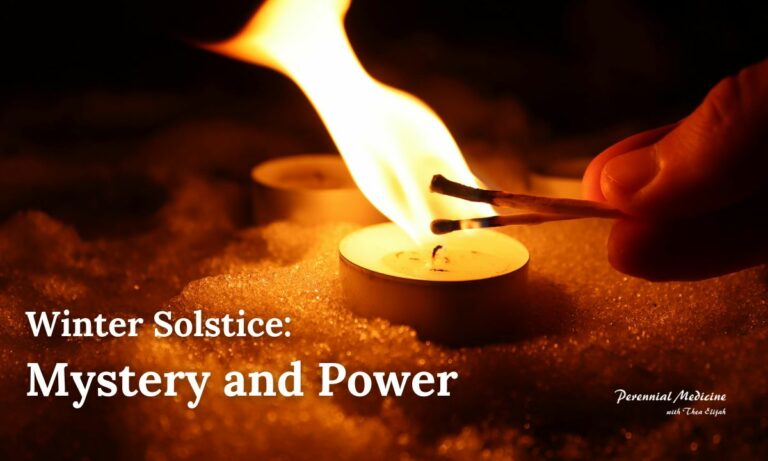CLYFFORD STILL: Beyond the Frame
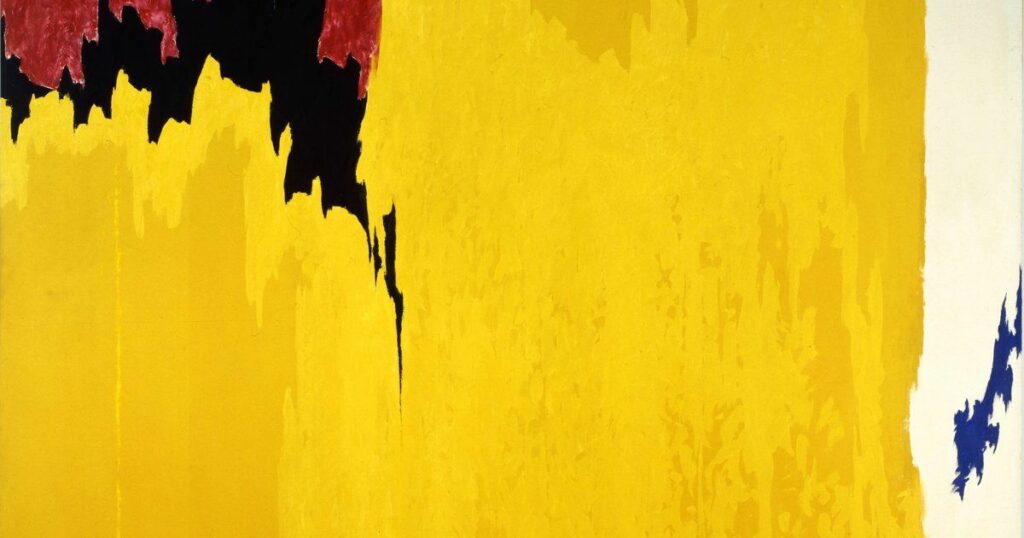
Last summer, I made a blog post that has really been living with me. It was called Heart 7: Poetry or Chaos. I’ve watched it over and over, especially the end imagery (see video embedded at the end of this blog post). This summer, I feel as though I am living in a “part two” of that message, thanks to Abstract Expressionist painter Clyfford Still.
I had the good fortune to visit Denver recently, and I chose to spend an entire day in the Clydfford Still museum. It was profoundly consciousness-altering, and I am grateful. I do not know if words can convey what the experience of these paintings is like, but I mean to try, because the result is that my soul feels larger, and more able to be with the chaos of this world.
The experience of Cyfford Still’s paintings brings alive everything I’ve been almost able to grasp and convey about fractal consciousness, about implicate order, about the sense of even brokenness being part of something harsh yet majestic, beyond comprehension but not beyond awareness—at least potentially.
These small, contained images of his paintings do not do justice to the impact of these same images on unframed canvases that are 12 x 16 feet large. It’s like having a shattered doorway into an unthinkable part of the universe surrounding you on four sides, with more in the next room, and the next, and the next.
The unframed feeling of boundlessness that is so much a part of the Clyfford Still experience is not possible when the images are framed by a book or a computer. When looking at an actually Clyfford Still painting, there is a palpable sense that the image continues, unseen, far beyond the canvas. The paintings all seem like fractal pieces of a much larger infinity.
Imagine an infinite skyline of trees waving in the wind against shifting cloud-forms. Anywhere along that progression of shifting forms, it would look 1) unruly and random, yet 2) somehow perfect and right exactly as it is. It would also, unfortunately, in the hands of most artists, look framed. Most artists assert the supremacy of their eye to “center” the image in some way, to place it within a limited space in such a way that they invisibly dominate the scene by being its focalizer. The unconscious message to the viewer is a “tamed and framed” feeling of containment and contentment, rather than the challenge and discomfort of unboundedness and awe.
Cylfford Still’s images are uncannily unfocalized, such that there is a feeling of a small fragment of an organic whole being revealed, rather than “captured.” What is even more peculiar (how does this happen!?): if you were to break up the canvas into smaller pieces, all the pieces would look similarly part of an implicate order. I have tried this, not literally, but by forming my hands into a circle or a rectangle shape, and looking through it like a viewfinder, at different parts of the canvas from different distances. These paintings are holographic and fractal. All pieces are as harmoniously composed as the whole, despite the “disorderly” and almost random appearance—just like that previously mentioned forest tree line on the horizon.
There is some lesson here about chaos and order, or what we believe them to be.
I have begun looking into what Clyfford Still has left behind as far as explanatory writings about his art. Apparently, he repudiates aesthetics as a motivation for making art; he believes that art should be judged by the results of its impact on people in ethical terms. He insists upon art as an ethical rather than an aesthetic pursuit. I can well believe this—his paintings challenge the smallness of our hearts to open and encompass more, and to find a peace that is closer to overwhelm than to ease. Our confrontation and interaction with these paintings stretches us into an unexpected serenity with the challenges of facing what is not comprehensible on human terms.
It’s as though he is helping us to grasp just a bit of the ungraspable pattern, the same one that placed the stars in such a “disorderly” tumble across the sky, or caused the wildflowers to be scattered across the field just like that, without the act of dominance inherent in framing that most art resorts to in order to help us feel like, “See, we captured it!”
The jaggedness of many of Clyfford Still’s paintings is reminiscent of broken things, in the perfection of their scattered fragments. This is a very different perfection than that of something that is whole—especially something human made, like a beautiful porcelain vase. When that vase lies shattered on the floor, its fragments are arranged as the I Ching would arrange them; they are as yarrow sticks, describing the fractal experience of now in the largest possible context: the open-ended infinite pattern beyond human grasp, but not beyond human glimpse. The beauty of shatteredness, including a shattered life or a shattered mind, seems to become part of an intimation of a larger pattern in which it makes some kind of intuitively felt sense—just not a sense that humans can apprehend directly.
No wonder Cylfford Still refers to the intent of his paintings as ethical rather than aesthetic. These paintings are not “pretty”, not meant to be viewed as a passive experience of comfortable reassurance that life is tame and everything makes sense. They are a raw challenge to open to the beauty of an order far beyond the human scale, and definitely not concerned with human preference. In Chinese medicine terms, this is art to expand the heart, and only secondarily to educate the Lung.
P.S. Do I have friends in the Denver area, reading this blog right now? Please let me know—maybe we can make a group visit to the Clyfford Still museum together. I would joyously use up frequent flyer miles for that! I’m serious; let me know, and we’ll do it.
Here is that last year’s blog post video about Heart 7: Poetry and Chaos:
To learn more about Fire element healing, join Thea at one of her upcoming Fire events. Fire Re-Ignition is happening on June 25th, 2023, and Whole Heart Acupuncture Fire is happening on July 8-9, 2023.
To join the discussion, find us on my Perennial Medicine discussion listserv (all are welcome)

